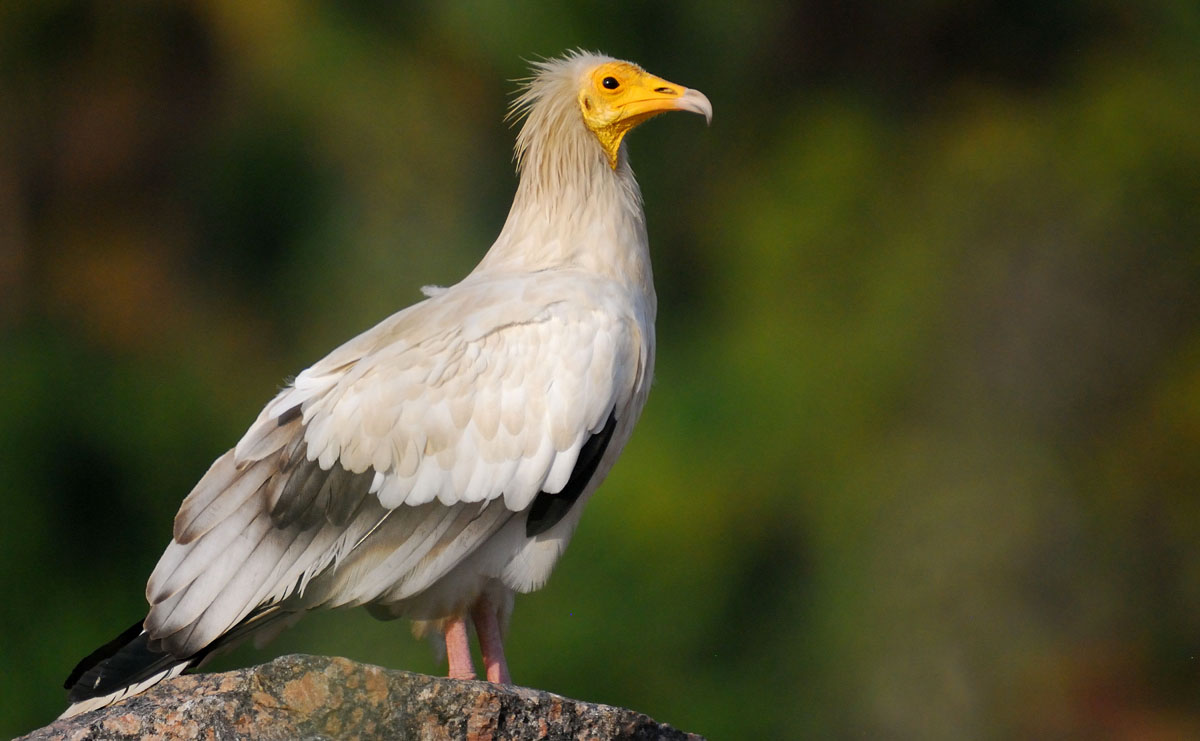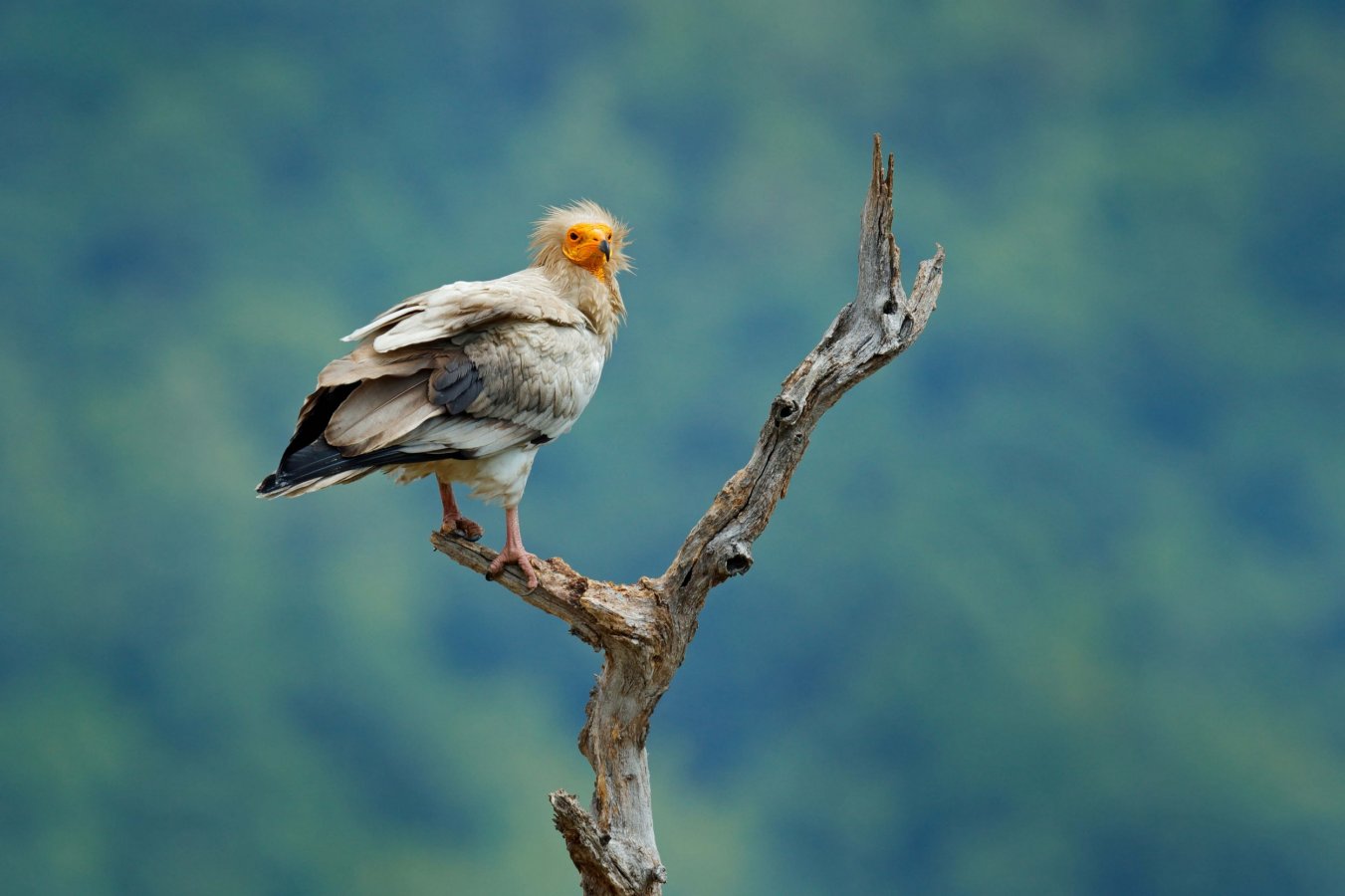https://egyptianstreets.com/2019/05/21/from-mythical-creature-to-endangered-species-the-egyptian-vulture/
From Mythical Creature to Endangered Species: The Egyptian Vulture

The Egyptian vulture, a bird species bearing much cultural significance in both ancient Egyptian and Greek mythology, is drastically declining in population due to various human-caused threats.
Every year, billions of different bird types migrate along a south-north axis, with the Middle East located at the crucial juncture of Africa, Asia and Europe and therefore constituting an important corridor for this seasonal movement of birds. While Egyptian vultures that breed in milder regions migrate southwards in winter, their tropical counterparts remain relatively sedentary.

A worrying trend that has recently gained the attention of bird conservationists, is that this species has been in massive decline throughout the past century. In fact, their population is considered to have halved since 1980, according to the IUCN Red List of Threatened Species.
Six species of vultures are currently recorded in Egypt – some being rarer than others – and while no recent study has determined the exact size of their population, they are generally in decline, Mindy Baha al-Din, bird specialist with the NGO Nature Conservation Egypt has noted.
The main reasons for this radical decline can be attributed to human action, with many vultures endangered by hunting, collision with power lines or wind turbines, or accidental poisoning. Farmers who use pesticides have the tendency to use them indiscriminately, often fatally affecting the birds that come into contact with the poison, Baha al-Din adds.
An urgent question posed by the global leader in bird conservation, BirdLife in a saddening article earlier this year was, 'Can we save it before it's too late?'
About the Egyptian Vulture
The Egyptian vulture carries weight not only in ancient Egyptian culture, being listed in the ancient hieroglyphic alphabet as the glottal letter A, but also others – Greek mythology being the source of its Latin name Neophron percnopterus. Neophron, as the myth goes, was a trickster turned into a vulture; whereas the Greek words perknos (dark) and pteros (wing) make up the second half of its name. In Arabic, the bird is known as al-rakhmat al-misriyya. It also appears in the Bible under the Hebrew name of râchâm.
The vulture was held sacred in ancient Egyptian religion, particularly to the mother goddess Isis. Also used as a symbol of royalty, it became associated with Egyptian goddesses Mut and Nekhbet, the latter of whom seemingly wore garments of white vulture feathers.
The Egyptian vulture is the only member of the genus Neophron. Widely distributed, its habitat ranges from the Iberian Peninsula and North Africa across to India. It is the only European vulture that migrates to Africa in winter.
Measuring on average between 58-70 cm and weighing of around 1.6-2.2 kg, the Egyptian vulture species is considerably smaller than other ones in Europe. It has a creamy white plumage, sharply contrasting the black wing coverts. Both its contrasting underwing pattern and wedge-shaped tail make it distinctive in flight and it can fly up to 80 kilometers per day in search of food. Life expectancy can reach up to 37 years in captivity.
In terms of behavior, Egyptian vultures are considered opportunists that eat a varied diet. They mostly feed on carrion but will also prey on small mammals, young birds, fish and eggs. The latter they are able to break by repeatedly dropping stones or pebbles onto them. Vulture couples build nests together, often on cliffs and other rocky areas.

Recent Awareness Campaigns
With the Egyptian vulture now at risk of extinction, two relevant awareness days held annually during the month of May have become suitable occasions to draw attention to this problem and point to possible conservation efforts.
The World Migratory Bird Day (WMBD) is held on the second Saturday of May each year. Created back in 1993, it started as an educational campaign in the US and focused on the western hemisphere. In 2018, a single global bird conservation campaign was established, which organizes different types of events and educational activities on this day. These tend to focus on topics such as improving habitats for survival, the impact of climate change on birds as well as the various laws and conventions set up to protect them, including the Migratory Bird Treaty Act, the Endangered Species Act, and the Convention on Biodiversity.
Under the initiative of UNESCO, the theme of this year's WMBD, held on 11 May, is 'Protect Birds: Be the Solution to Plastic Pollution.' The aim is to encourage effective conservation, especially at World Heritage sites, where tourists often leave behind trash and which are key stopover sites for migratory birds. Similarly, beaches where plastic washes up have become dangerous for birds and turtles.
In Egypt, the Ministry of Environment joined the rest of the world in celebrating this day. The event, which saw Minister Dr. Yasmin Fouad participate alongside various national conservation partners, provided the opportunity to bird-watch and was combined with discussions on the conservation of birds in the context of plastic pollution.
The second such noteworthy day is the so-called Endangered Species Day, celebrated on May 17 every year. While primarily US-based with a national network of conservation, scientific, education and business organizations alongside more than 150,000 individual supporters dedicated to protecting endangered wildlife, many targeted campaigns and grassroot actions are directed at stopping human-caused extinction of at-risk species across the world.
In the case of the Egyptian vulture, several recent initiatives have emerged:
The Egyptian Vulture – New LIFE Project, which was launched in July 2017 with financial support from the EU's LIFE Programme – has seen institutions and organizations from 14 countries spanning the Middle East, Africa and the Balkans unite to save the endangered species.
Committed to the conservation, restoration and protection of vultures, the Vulture Conservation Foundation (VCF) has developed numerous actions and activities, including captive breeding, the prevention of threats, strengthening existing populations, reintroducing vultures into their original habitats, as well as scientific research and awareness-raising with organizations, institutions and governments.
From 1-4 October, the first European Vulture Conference is set to take place in Portugal, which will involve scientists, conservationists and the public looking at the latest research on vultures and their conservation both in Europe and beyond.
On 19 May, the press office of the Bulgarian Society for the Protection of Birds (BSPB) announced that three young Egyptian vultures which had been raised in three different European zoos and had spent just over two months in a special adaptation aviary, had been released to the Eastern Rhodopes, according to Egypt Today.
The three vultures were hatched last year and are part of an experimental project intended to find the best approach to re-establishing the species. For the project they were tagged with GPS-GSM transmitters by an expert team from the BSPB, allowing the latter to monitor their behavior and adaptation.
Finally, an informative and topical short film that depicts the epic journey of migratory birds along the Red Sea flyway across Egypt, Soaring Legends (2012) by Gabriel Mikhail also touches on the rising number of human-caused barriers. Its sponsors include the Egyptian Ministry of State for Environmental Affairs, Birdlife International and the UNDP and it was nominated for the Al Jazeera Documentary Film Festival back in 2013.
-- Sent from my Linux system.
No comments:
Post a Comment